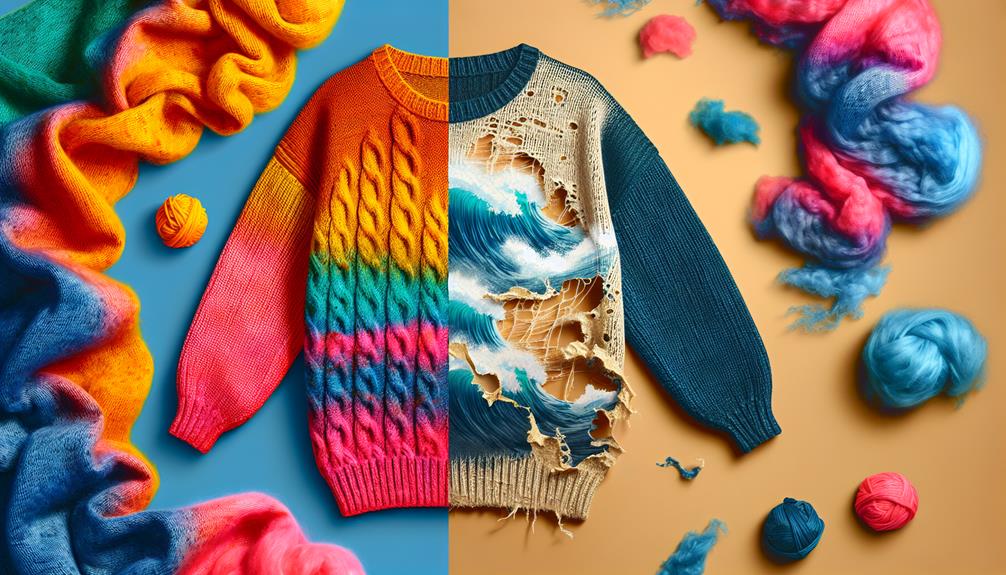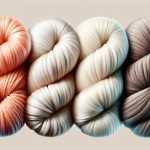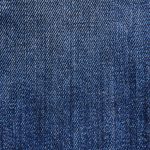As I explore the realm of acrylic fabric, I find myself pondering its dual nature—like a coin with two sides, boasting advantages and harboring disadvantages.
The allure of acrylic lies in its elasticity, warmth retention, and durability, yet its Achilles' heel reveals itself in its moisture absorption, comfort levels, and propensity for pilling.
Join me in unraveling the intricacies of this synthetic textile, as we weigh its pros and cons to make informed decisions in our fabric choices.
Table of Contents
Key Takeaways
- Acrylic fabric offers exceptional strength, durability, and elasticity, surpassing wool in many aspects.
- Despite some skin sensitivity risks, acrylic fabric is cost-effective, easy to maintain, and ideal for various uses.
- Acrylic fibers excel in moisture-wicking, durability, and resistance to external factors, making them practical for everyday wear.
- While lacking breathability, acrylic fabric is a reliable, long-lasting choice for products requiring resilience and low maintenance.
Cost-Effectiveness
Choosing acrylic fabric proves to be a cost-effective decision, offering both affordability and durability compared to other synthetic fibers. When it comes to cost-effectiveness, acrylic fabric stands out for its budget-friendly nature, making it a popular choice among consumers looking for quality at a reasonable price. Its affordability means that you can enjoy the benefits of acrylic fabric without breaking the bank, whether you're shopping for clothing, upholstery, or accessories.
One of the key advantages of acrylic fabric's cost-effectiveness is that it provides excellent value for its price point. Despite being economical, acrylic fabric doesn't compromise on quality, offering a balance between affordability and performance. This makes it a practical choice for a wide range of applications where durability and cost-efficiency are essential. Additionally, the easy maintenance and care requirements of acrylic fabric further contribute to its overall cost-effectiveness, saving you time and money on cleaning expenses in the long run.
Strength and Durability
When it comes to strength and durability, acrylic fabric stands out for its long-lasting fibers that can endure frequent washing without losing their resilience.
These fibers are resistant to wear and tear, making acrylic a reliable choice for garments and textiles needing to withstand everyday use.
With its high strength and ability to maintain its quality even after numerous wash cycles, acrylic fabric proves to be a durable option for various applications.
Long-Lasting Acrylic Fibers
Undoubtedly, acrylic fibers stand out for their exceptional strength and durability, boasting a high range of 22.1 to 48.5cN/dtex, making them a reliable choice for long-lasting products.
The inherent strength of acrylic fibers contributes significantly to their overall durability, ensuring they can withstand regular wear and tear. This robustness makes acrylic fabrics an ideal option for items that require longevity and resilience.
The durability of acrylic fibers extends beyond just strength; they also exhibit good resilience and elasticity, outperforming wool in terms of elasticity. Even when exposed to sunlight, acrylic fabrics maintain their integrity, showcasing their ability to retain strength and structure over time.
With excellent resistance to acid and oxidation, acrylic fibers prove to be a practical and enduring choice for a wide range of applications.
Resistant to Wear
Acrylic fabric's remarkable strength and durability make it a top choice for items requiring resilience against wear and tear. With a high strength range of 22.1-48.5cN/dtex, acrylic surpasses wool in elasticity, ensuring longevity and resilience with a 65% rebound rate at 20% elongation.
Its excellent abrasion resistance further solidifies its durability, making it ideal for products facing frequent wear and tear. Whether used in outdoor gear or sun-exposed items, acrylic fabric's ability to withstand harsh conditions showcases its durability.
Even when exposed to the sun, acrylic fabric maintains its quality and appearance over time, thanks to its high strength and resilience. Choosing acrylic ensures your items endure daily use with style and reliability.
Endures Frequent Washing
Regularly subjected to the demands of laundering, acrylic fabric's robust nature ensures it maintains strength and durability even after numerous wash cycles. With a high strength range of 22.1 to 48.5cN/dtex, acrylic fabric proves its durability by enduring frequent washing without compromising its resilience.
This fabric's ability to withstand multiple wash cycles while retaining its quality showcases its exceptional durability. Not only does acrylic fabric stay intact and keep its shape through regular exposure to water and detergents, but it also contributes to its longevity.
The practicality of acrylic fabric for items requiring frequent cleaning is evident in its resilience to washing. Whether for high-traffic areas or items needing regular maintenance, acrylic fabric's endurance through washing makes it a reliable choice for long-lasting products.
Moisture-Wicking Properties
Let's talk about how acrylic fabric's moisture-wicking properties can revolutionize your comfort during physical activities.
The ability of acrylic to draw moisture away from your skin and promote quick evaporation can keep you feeling dry and fresh even during intense workouts.
This feature makes acrylic a top choice for athletic wear and outdoor adventures.
Moisture-Wicking Benefits
With its moisture-wicking properties, acrylic fabric efficiently draws moisture away from the body, ensuring a dry and comfortable experience for the wearer. This feature is particularly beneficial for activewear and outdoor clothing, where staying dry is crucial during physical activities. Here is a table highlighting the advantages of acrylic fabric's moisture-wicking benefits:
| Moisture-Wicking Benefits of Acrylic Fabric |
|---|
| Helps regulate body temperature |
| Reduces the risk of chafing |
| Enhances comfort during physical exertion |
| Prevents fabric from becoming waterlogged |
| Contributes to quick-drying nature |
These benefits showcase why acrylic fabric is a popular choice for performance garments.
Performance in Sweat
Having discussed the moisture-wicking benefits of acrylic fabric in the context of activewear, let's now explore its performance in sweat, highlighting its exceptional ability to keep you dry and comfortable during physical activities.
Acrylic fabric's moisture-wicking properties efficiently draw sweat away from the skin, promoting quick evaporation and maintaining a dry feeling even during intense workouts. Its quick-drying performance is especially advantageous for sportswear and outdoor activities where moisture management is key.
Colorfastness
Colorfastness is one of the key attributes that sets acrylic fabric apart, as it excels in retaining its vibrant color even after multiple washes and exposure to sunlight. Acrylic fabric is known for its excellent colorfastness, which means it retains its color well without fading or bleeding during washing. This quality makes acrylic a top choice for items that require both durability and long-lasting color vibrancy.
Unlike some other fabrics that may lose their color over time, acrylic maintains its color integrity, ensuring a consistent and appealing appearance wash after wash. Whether used in clothing, upholstery, or outdoor items exposed to sunlight, acrylic's resistance to color fading makes it a reliable option for those seeking products that can withstand the test of time.
The ability of acrylic fabric to hold onto its colors makes it not only practical but also visually appealing, adding to its overall desirability in various applications.
Wrinkle-Resistance
I love how acrylic fabric's wrinkle-resistance makes my life easier. It means less time spent ironing and more time looking put together effortlessly.
With acrylic garments, I can enjoy a smooth and neat appearance without worrying about creases.
Durability
With its remarkable durability and exceptional wrinkle-resistance, acrylic fabric stands out as a reliable choice for long-lasting wear. Acrylic's ability to withstand abrasion and tearing makes it a durable option, ensuring that garments made from this fabric maintain their quality over time.
Its high resistance to wrinkles means that even after wear and washing, acrylic fabric retains a smooth and neat appearance, reducing the need for ironing. This durability extends to outdoor wear, where acrylic's quick-drying properties and shape retention make it ideal for various activities.
Additionally, acrylic fabric's resistance to moths, oils, and chemicals further enhances its longevity. For those seeking a fabric with lasting quality and minimal maintenance, acrylic proves to be a durable and practical choice.
Maintenance
As we explore the low-maintenance advantages of acrylic fabric, its inherent wrinkle-resistant nature emerges as a standout feature for effortless care and upkeep. Acrylic fabric's ability to resist wrinkles sets it apart as a hassle-free option for clothing and textiles.
This durability means that garments made from acrylic maintain a smooth, wrinkle-free appearance even after washing, reducing the need for ironing or steaming. The fabric's resilience to creases makes it an excellent choice for travel clothing or items that require minimal maintenance.
Skin Irritation Risks
Are skin irritation risks associated with wearing acrylic fabrics?
When it comes to acrylic fabrics, there are indeed skin irritation risks to consider, especially for individuals with sensitive skin or allergies to synthetic materials. The chemical composition of acrylic fibers can sometimes lead to skin sensitivity, causing discomfort, itching, redness, or even rashes upon direct contact. To help you understand the potential risks better, let's break it down in the table below:
| Skin Irritation Risks of Acrylic Fabrics | Effects |
|---|---|
| Chemical composition triggers sensitivity | Discomfort |
| Higher risks for sensitive skin or allergies | Itching |
| Prolonged contact may lead to redness or rashes | Redness/Rashes |
To avoid these skin irritation risks, those prone to such issues may want to opt for natural fiber alternatives like cotton or wool. Being aware of these disadvantages can help you make informed decisions when selecting clothing materials, prioritizing both comfort and skin health.
Lack of Breathability
Considering the limited air permeability and tight weave structure of acrylic fabric, its lack of breathability can lead to discomfort and moisture buildup, making it less suitable for hot climates or physical activities.
Acrylic fabric's synthetic nature hinders airflow, preventing the fabric from effectively releasing heat and moisture. This lack of breathability can result in a sauna-like environment, causing sweat to accumulate on the skin and potentially leading to irritation.
Compared to natural fibers such as cotton or wool, acrylic fabric fails to provide adequate ventilation, trapping heat and sweat against the body. The non-breathable quality of acrylic fabric can be particularly problematic in humid conditions, exacerbating the discomfort experienced by the wearer.
When worn in hot climates or during strenuous activities, acrylic garments may hinder the body's natural cooling process, contributing to feelings of stickiness and overall unease. To avoid such issues, individuals may opt for more breathable fabrics to ensure comfort and optimal moisture management.
Insulation Compared to Wool
When comparing insulation properties, acrylic fabric outperforms wool due to its fluffy texture and high elasticity. Acrylic fabric excels in warmth retention, trapping heat effectively to keep you cozy in cold weather. Its soft texture provides comfort while still maintaining a lightweight feel.
Unlike wool, acrylic fabric has remarkable elasticity, bouncing back to its original shape with a 65% rebound rate at 20% elongation. This means that the fabric retains its insulating properties even after being stretched, ensuring long-lasting warmth.
Additionally, acrylic fabric boasts higher strength compared to wool, making it durable for everyday wear. Its ability to resist acid attacks and organic solvents further enhances its longevity. Moreover, acrylic fabric maintains its integrity even when exposed to sunlight, with minimal intensity loss over time.
Non-Biodegradability
With its remarkable insulation properties and durability, acrylic fabric's non-biodegradability presents a significant environmental challenge. As a synthetic material, acrylic doesn't decompose naturally over time, leading to concerns about its impact on the environment. Here are three key points to consider regarding acrylic fabric's non-biodegradability and the associated environmental concerns:
- Persistent Waste: Acrylic waste, due to its non-biodegradable nature, can persist in landfills for extended periods, contributing to environmental pollution and resource depletion.
- Limited Recycling: The synthetic composition of acrylic makes recycling a challenging process, as there are limited facilities equipped to effectively recycle this material, further exacerbating its environmental impact.
- Exploring Alternatives: To address the environmental challenges posed by acrylic fabric, researchers are exploring sustainable alternatives such as recycled acrylic and natural fibers, aiming to reduce the environmental footprint associated with non-biodegradable materials like acrylic.
Varied Acrylic Characteristics
Acrylic fabric boasts a diverse range of characteristics that set it apart from other materials in the textile industry. It is often referred to as artificial wool due to its fluffy and soft texture, providing excellent warmth retention similar to wool. In terms of elasticity, acrylic fabric surpasses wool, maintaining a 65% rebound rate at 20% elongation. Additionally, its high strength, ranging from 22.1 to 48.5cN/dtex, makes it durable and long-lasting. Acrylic fabric also exhibits excellent light fastness, with less than a 20% intensity loss after a year of sun exposure. Despite some limitations in alkali resistance, acrylic fabric is easy to maintain and possesses good resilience properties.
| Characteristics | Acrylic Fabric |
|---|---|
| Texture | Soft and fluffy like wool |
| Elasticity | High elasticity surpassing wool |
| Strength | Ranges from 22.1 to 48.5cN/dtex |
| Light Fastness | Less than 20% intensity loss after a year of sun exposure |
| Maintenance and Resilience | Easy to maintain, good resilience properties |
Frequently Asked Questions
What Are the Problems With Acrylic Fabric?
Wearing acrylic fabric poses challenges like poor moisture absorption leading to discomfort, susceptibility to damage from alkaline cleaners, and pilling due to short fibers. These issues make it less breathable and warm compared to natural fibers.
What Is the Advantage of Acrylic Over Other Fabrics?
I find that the advantage of acrylic over other fabrics lies in its exceptional elasticity, warmth retention, strength, light fastness, and resistance to acids and solvents. These qualities make acrylic a durable and versatile choice for various applications.
Is Acrylic Fabric Safe to Wear?
Absolutely, acrylic fabric is safe for most wearers. While some with sensitive skin may experience mild irritation, it generally poses no significant health risks. Following care instructions and testing it first is wise.
Is 100% Acrylic a Good Fabric?
I find 100% acrylic fabric to be a reliable choice. It offers durability, moisture-wicking properties, and color retention. While not as warm as wool, it's lightweight and easy to maintain, making it versatile for various uses.
- Where to Buy Wholesale Fabric in China: Top Suppliers - June 20, 2025
- Where to Buy Silk Fabric in China: Best Markets and Stores - June 20, 2025
- Where to Buy Affordable Fabric From China: Budget-Friendly Options - June 20, 2025





